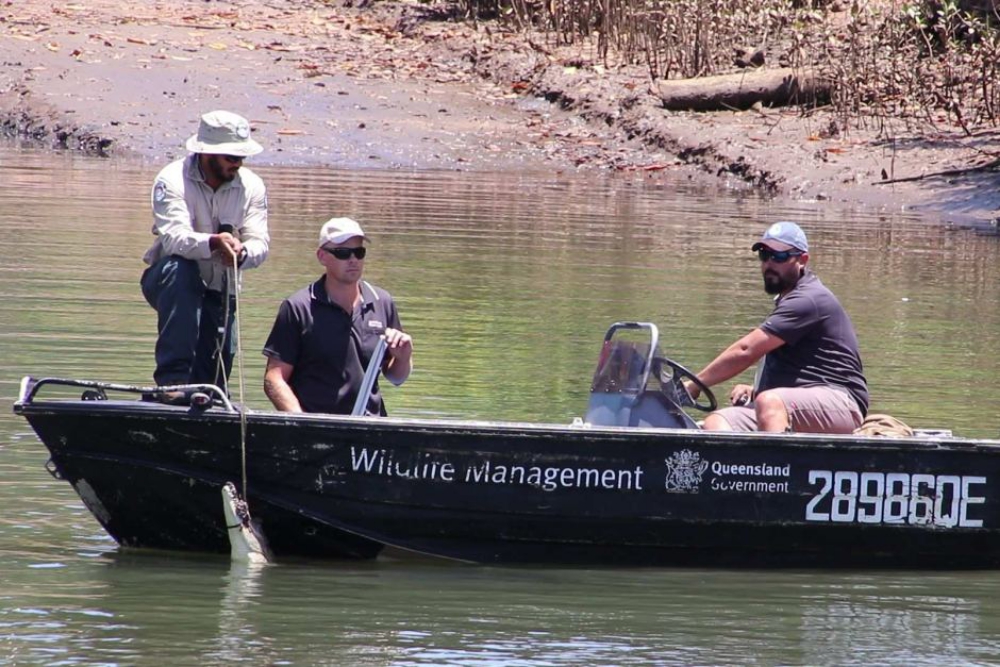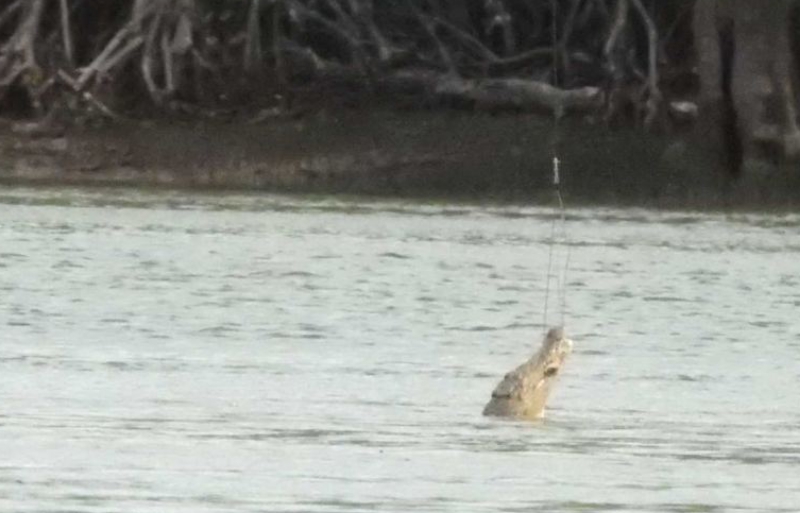https://youtu.be/94m4TPuAG50
Queensland Parks and Wildlife rangers are using drones to bait and catch problem crocodiles — by the jaws — in the state’s north.
The technology has been added to the decades-old arsenal of baited traps, nooses and harpoons that the state’s environment department uses to deal with targeted animals.
Senior wildlife officer Dr Matt Brien said the drones took advantage of saltwater crocodiles’ instinct to attack anything moving on the water’s surface.
“Using a drone, wildlife officers skim a baited noose along the water’s surface near the target crocodile,” he said. “When the crocodile grabs the moving bait and attempts to eat it, the noose locks onto the animal’s top jaw and the rope is released from the drone.’

Queensland Parks and Wildlife rangers secure a problem crocodile caught by a drone carrying a baited line
A fast and gentle method
The new approach to tackling problem animals has already shown signs of success.
A drone was deployed over Innisfail’s Johnstone River in August last year, with a targeted crocodile captured within 15 minutes of the drone’s launch. Baited traps can take up to two weeks to catch a problem animal, if at all.
Dr Brien said the drones allow wildlife officers to quickly catch crocodiles that evade other methods of capture without harming them.
“Inspections of the top jaws of crocodiles captured during the research program showed the noose caused the animals no abrasions or bruising,” he said. “This method provides researchers and wildlife managers with an innovative, non-lethal, humane and efficient way of removing wary and hard to capture crocodiles from the wild.”
A spokesperson for the Department of Environment and Science said the drone capture method had been developed with animal ethics approval from the Department of Agriculture and Fisheries. The spokesperson said that all drone activities were compliant with Civil Aviation Safety Authority regulations.
A research report on the use of the technology, written by Dr Brien, is due to be published in the peer reviewed scientific journal Herpetological Review in March.
Photos: Queensland Department of Environment and Science
Source: ABC News

